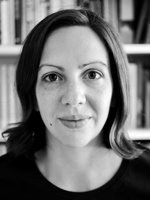


Even more confusing was the fact that during the 2016 election campaigns, the bishops made statements that were critical of Donald Trump, at the same time insisting on their reluctance to intervene in the political process. Bishops had refrained from political involvement, and when they became involved at the national level, they tended to pull Catholic voters in opposite directions of the political spectrum. Up to the 1960s, when the National Conference of Catholic Bishops (NCCB) was set up, U.S. In the first chapter, “The US Catholic Bishops: From Separatism to Public Intervention,” Marie Gayte analyzes the complex position of the Bishops toward the American political process. Therefore, Trump’s victory should be understood as another moment that reveals “the challenges and complications inherent to the coalitional nature of the Religious Right.”ģ The second part of the book proposes two chapters on the U.S. Rather than signaling the end of the Religious Right, Young maintains that Trump’s victory highlights the Religious Right’s history of division and disunity.

Neil J. Young asserts that while Evangelicals supported the candidacy of Trump, the other two pillars of the Religious Right, conservative Mormons and Catholics, largely rejected him. The last chapter in this part, “Catholics and Evangelicals: Does Donald Trump Mean the End of the Religious Right?” focuses on the speculations about the Religious Right’s demise brought on by Trump’s victory. According to Chelini-Pont, the alliance of conservative Catholics with the evangelical Protestant-led Right has greatly contributed to the “Catholization” of the Republican Party. Ever since the 1950s, Catholic conservative ideas have exerted a great influence on the political debate. She particularly insists on the emergence in the 1950s of the Catholic-led intellectual conservative movement and its role in the ideological building of the contemporary American Right. In the following chapter, “Catholic Colonization of the American Right,” Blandine Chelini-Pont gives us an overview of the rise and evolution of the modern post-WWII Catholic Right. Among religious progressives, Catholics are nowadays the largest and perhaps most politically active group. The author, Amandine Barb, argues that since the 1970s there has been an active counter-mobilization among progressive Catholics who have revealed an interest in such issues as social welfare, the environment, immigration, and health care. The first chapter, entitled “Catholic Patterns in the American Left,” is devoted to the rise in the United States of the Catholic left since the mid-2000s. It is divided into three chapters which converge on the developments that have been going on in the recent past. Catholicism from an ideological perspective. The Catholic swing vote, concludes M. J. Rozell, “remains a potent force.”Ģ The volume is organized in three main parts. Once a reliable component of the New Deal Democratic Party coalition, Catholics have become independents and even Republicans. Often considered as a key “swing voting group”, Catholic voters can go from one party to the other depending on the political context. Demonstrating that the Catholic electorate is not a monolithic power, the introduction by Mark J. Rozell sets the scene for the nine articles collected in the volume. 1 Bringing together contributions from leading scholars in religion and politics in the United States, this 226-page book explores the role played by Catholics in American politics, with a particular focus on the 2016 presidential election.


 0 kommentar(er)
0 kommentar(er)
